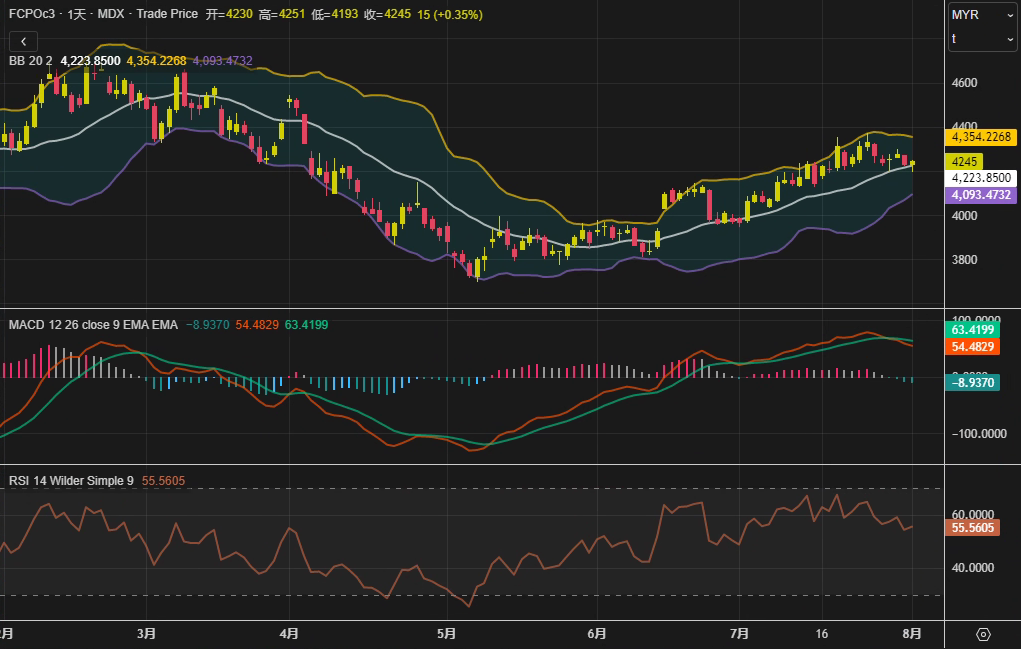Palm oil prices fall for two consecutive weeks, but bears should be cautious! Tariff cuts and a depreciating ringgit may be brewing a rebound.
2025-08-01 19:00:39

Policies and exchange rates become short-term drivers
Friday's rebound was primarily driven by two factors: a 0.35% depreciation of the Malaysian ringgit against the US dollar, which boosted the appeal of dollar-denominated palm oil; and a US announcement to reduce import tariffs on Malaysian goods from 25% to 19%. Anilkumar Bagani, head of research at Sunvin Group, noted that this policy eased market concerns about constrained demand, which, combined with a rebound in South American soybean oil prices, offset early selling pressure.
However, market sentiment remains constrained by fundamental pressures. Paramalingam Supramaniam, director of brokerage Pelindung Bestari, stated that while Malaysia's production rebounded beyond expectations in July, weak exports could lead to month-end inventories exceeding 2.1 million tons. Shipping agency data showed a month-on-month decline of 6.7%-9.6% in July, confirming weak demand. The market awaits official data from the Malaysian Palm Oil Board (MPOB) on August 11th to confirm the true direction of the supply-demand balance sheet.
Competition in the oil and fat and energy markets drags down
In the external market, the main soybean oil contract on the Dalian Commodity Exchange rose 0.83%, while the palm oil contract was almost flat. On the Chicago Board of Trade, soybean oil prices fell 0.47%. This divergence suggests that palm oil, a price-sensitive commodity, is facing pressure from soybean oil substitution. Furthermore, while international crude oil prices rose slightly this week, demand concerns sparked by the Trump administration's new round of tariffs have clouded the outlook for biodiesel feedstock demand, indirectly weakening palm oil's energy premium.
Institutional view: Short-term rebound is difficult to change inventory pressure
Supramaniam emphasizes that if July inventories climb above 2.1 million tons as expected, the market could retest the psychologically important 4,000 ringgit level. Bagani, on the other hand, believes that the positive impact of the tariff reduction has not yet been fully priced in, and coupled with the ringgit's exchange rate fluctuations, this may support prices in the short term within the 4,200-4,350 ringgit range. Notably, both institutions view the August 11th MPOB report as a key turning point; if inventory increases exceed expectations, this could trigger another round of selling.
Looking ahead, the palm oil market is caught in a tug-of-war between favorable policies and bearish fundamentals. While tariff adjustments have provided a short-term respite, the structural contradiction between recovering production and weak exports remains the core factor suppressing prices. Traders should closely monitor ringgit exchange rate fluctuations, MPOB data, and competitive oil and fat price trends to capitalize on periodic opportunities.

- Risk Warning and Disclaimer
- The market involves risk, and trading may not be suitable for all investors. This article is for reference only and does not constitute personal investment advice, nor does it take into account certain users’ specific investment objectives, financial situation, or other needs. Any investment decisions made based on this information are at your own risk.





















